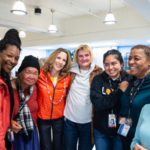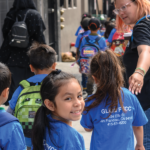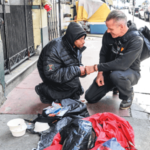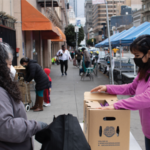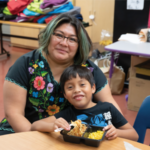Expanding GLIDE’s Reach Through Integrated Mobile Services
Expanding GLIDE’s Reach Through Integrated Mobile Services
The rising homeless population in San Francisco is alarming by any measurement. The 2019 single-day Point-in-Time survey noted that 8,035 people were experiencing homelessness. However, based on city services accessed by unhoused individuals, the departments of Public Health and Homelessness and Supportive Housing estimate the true number of people experiencing homelessness to be more than double the 2019 survey count. Across the city, signs of despair abound. The Healthy Streets Operations Center lists unhoused individuals living in 537 tents and structures and roughly 900 vehicles throughout San Francisco. More distressing figures on the continued growth of the city’s homeless are expected soon. The 2022 Point-in-Time report will be released later this summer.
Recognizing the rising need across the city, GLIDE is launching an expanded scope of services through a redesigned Integrated Mobile Services initiative to reach more people in under-resourced neighborhoods across San Francisco. GLIDE’s Integrated Mobile Services ramp-up is part of its bold strategy to deliver scalable and sustainable solutions to complex problems that produce measurable outcomes for people in crisis. “The reality is that the need is severe and increasingly dispersed across the city. We see homelessness and related issues of food insecurity, substance use disorders, and poverty in more neighborhoods, and a lack of coordinated services to address these growing critical concerns,” said President and CEO Karen Hanrahan. “GLIDE continues to be a beacon of hope in the city, and we are taking the steps necessary in this critical moment to help more vulnerable individuals and families out of crisis to stability, creating a pathway off the streets and out of poverty.”

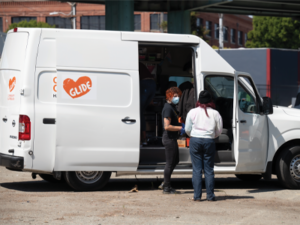
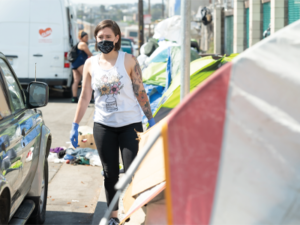
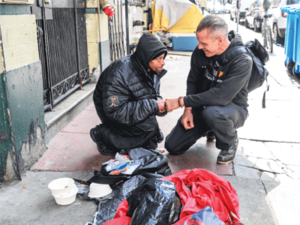
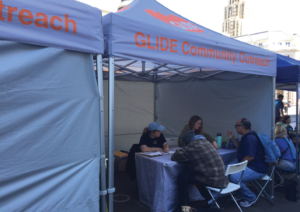
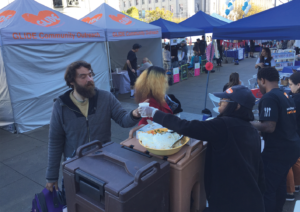
Mobile Teams
Building on the successful model of its Harm Reduction’s outreach vans, GLIDE’s new Integrated Mobile Services effort will provide more outreach, engagement and access through an enhanced fleet of its Mobile Teams. “This initiative will be comprehensive and will offer service access for individuals on the streets, in tents, living in vehicles, and encampments,” says Chief Impact and Strategy Officer Jean Cooper. With a focus on street engagement and providing in-the-field services, the expanded outreach will connect clients to on-the-spot Coach Navigators who can guide a client to whatever services necessary and assist them on their path towards stability. “With this tailored service approach, our mobile teams are able to not only meet the needs of people in the Tenderloin, but it also literally expands our reach and impact to those in under-resourced neighborhoods across the city.”
Integrated Service Hubs
Another key component for the planned Integrated Mobile Services expansion is connecting with community partners and service organizations to bring mobile Integrated Service Hubs to locations across the city. Patterned after GLIDE’s successful Tenderloin Hub, these mobile one-stop, pop-up service hubs will create opportunities to bring more services to more people through scalable community events curated to meet the needs of residents, both housed and unhoused. “We’ve seen this work right outside of GLIDE with the many direct services available through the Tenderloin Hub. In collaboration with partner service providers, we are planning to establish satellite hubs in targeted neighborhoods,” says Cooper. The mobile hubs, which could be featured monthly in an accessible farmers market fashion, will provide consistent and reliable access to nutritious meals, a mobile food pantry, direct services for rental assistance subsidies, and linkages for shelter and housing. Like the COVID testing and vaccination services on the Tenderloin Hub, GLIDE’s community health services partners will also offer medical care and resources for substance use and mental health support. As a result of these mobile hubs, much-needed services could be consistently made available to those in need and help them toward a path toward health and stability.
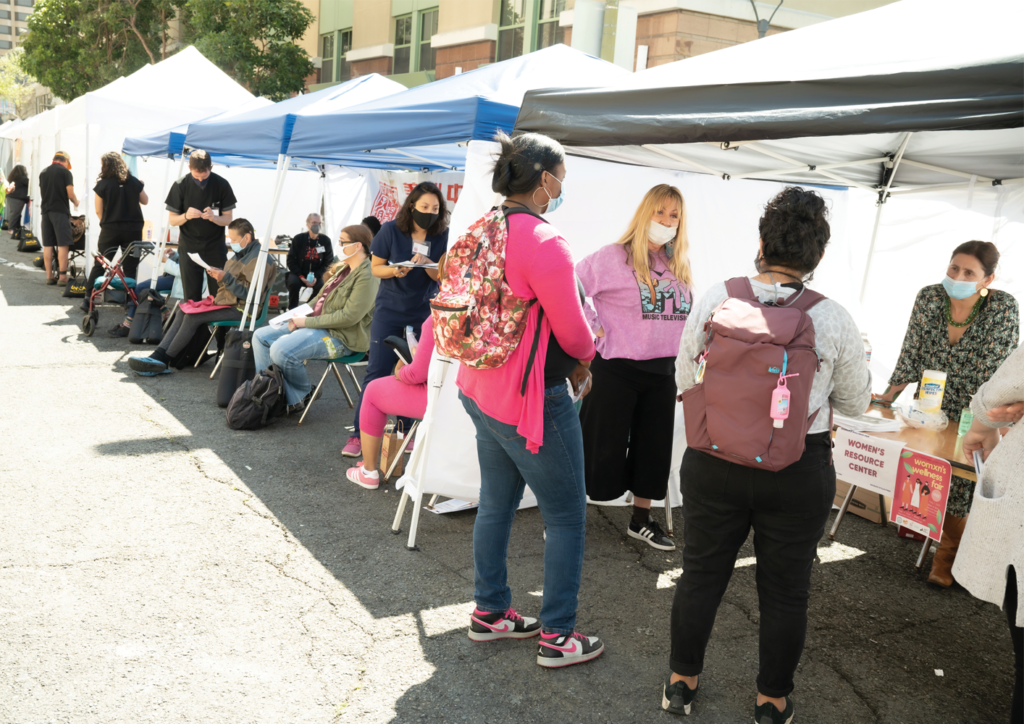
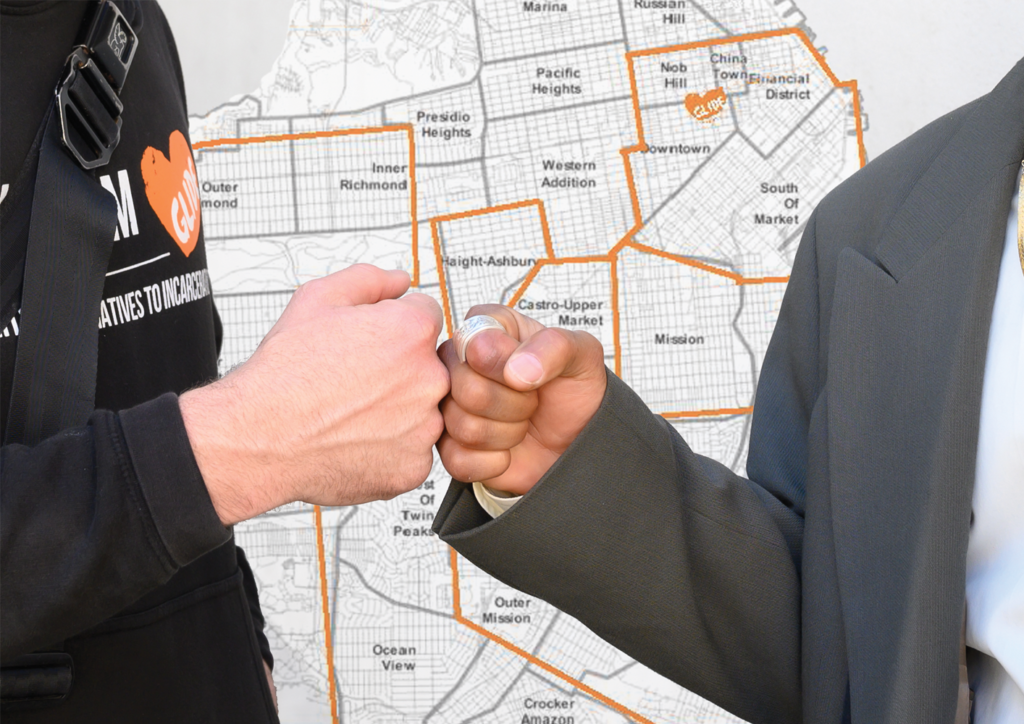
Neighborhood Partnerships
In addition to serving more areas in the Tenderloin, GLIDE plans to partner with local neighborhood leaders and community-based organizations to help bridge service gaps in other under-resourced communities, including South of Market (SOMA), Potrero Hill, and Bayview Hunters Point. The rise in homelessness across the city requires innovative action and collaboration. By building on established partnerships with other service providers, including food banks, health providers, nonprofits, interim housing providers, and various city agencies, GLIDE’s Integrated Mobile Services expansion will provide more neighborhoods with the increased capacity necessary to meet the increasing needs of people experiencing homelessness.
“The planned expansion of our Integrated Mobile Services is evidence-based and reflective of the innovation of the next generation of GLIDE programs and services,” says President and CEO Karen Hanrahan. “From providing community health referrals to client advocacy to offering essential services and substance use support, the goal in expanding our Integrated Mobile Services is to help more people stabilize their lives and move off the streets, and thrive.”

